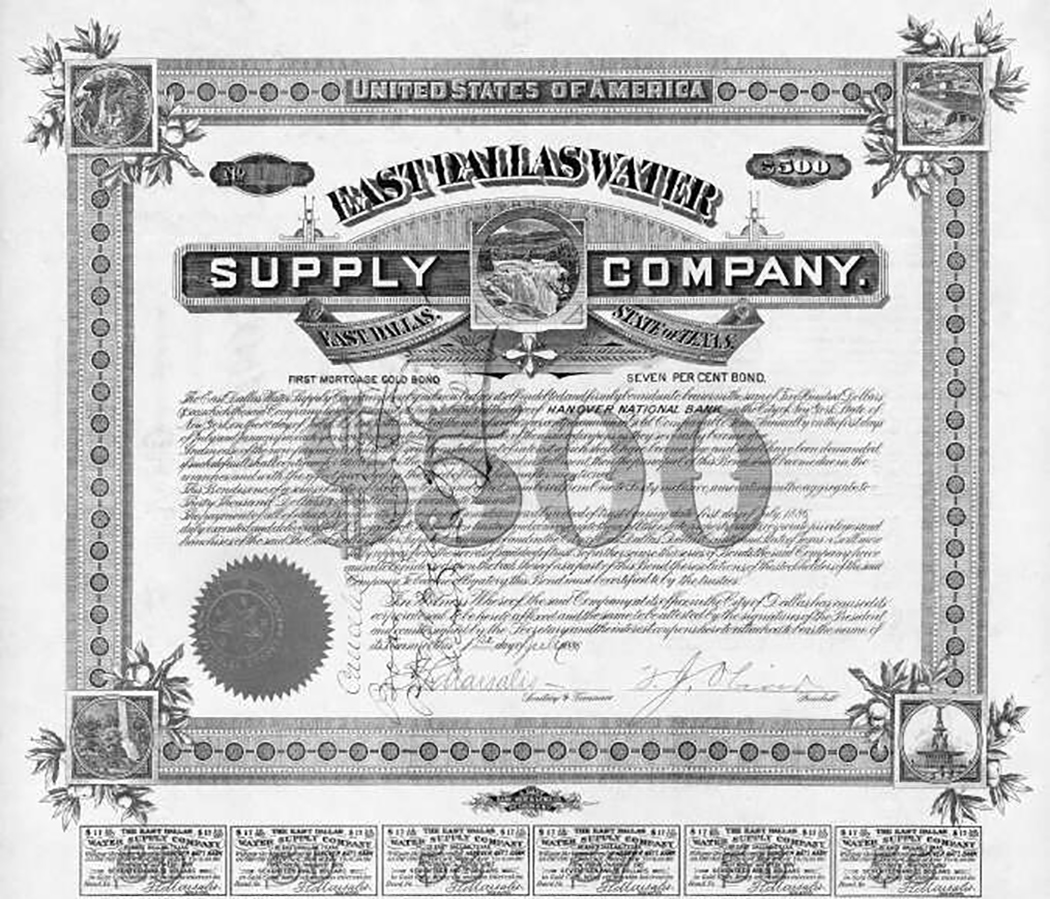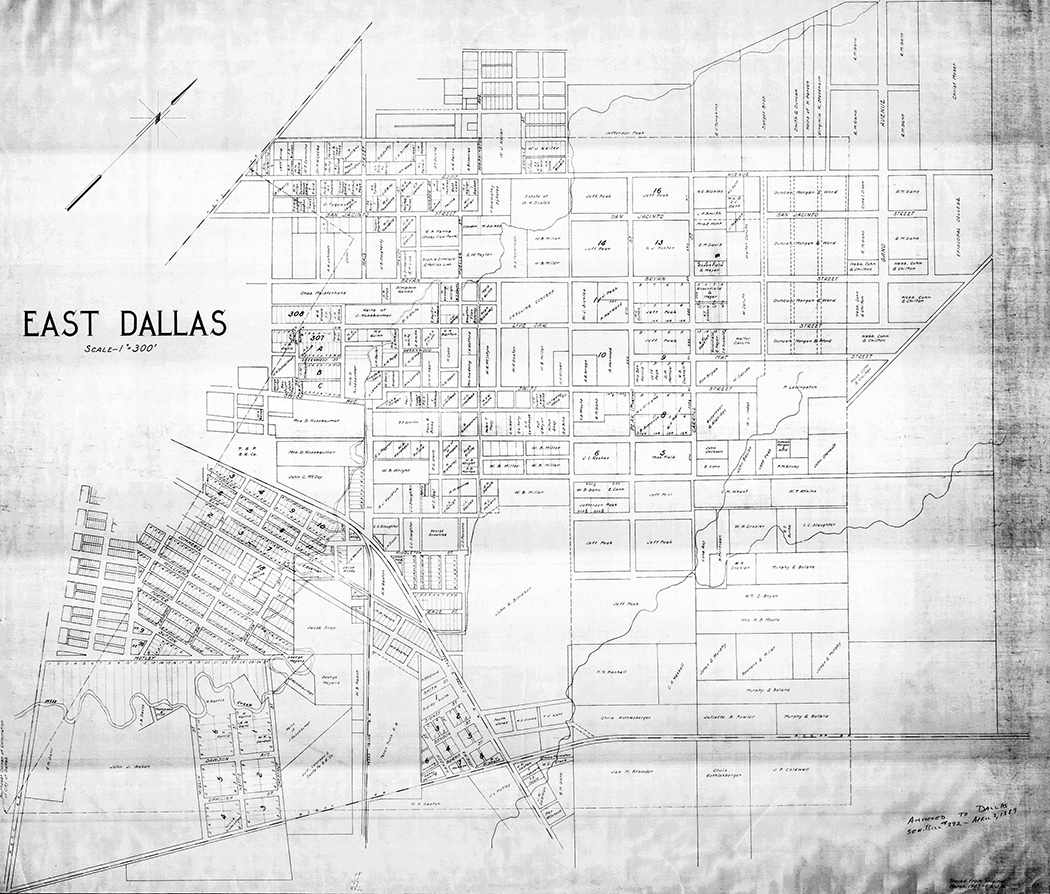
Certificate for shares in the East Dallas Water Supply Company, signed by Thomas Marsalis, developer of Oak Cliff.
Jan. 1, 1890 was the beginning of a happy New Year for the City of Dallas. Through an unusual turn of events, Dallas briefly became the largest city in Texas, while closing the door on the short but lively history of a town called East Dallas.
It all started with a Dallas pioneer named William H. Gaston.
A Civil War veteran and a banking and real estate entrepreneur, Capt. Gaston gambled on Dallas’ future and purchased 40 acres of land adjacent to the eastern boundary of the city and proclaimed it East Dallas. It was incorporated as a municipal government in 1882 and expanded to 1,429 acres that stretched from the Baylor Hospital area south to what’s now Fair Park. It was also attractive to business; it encompassed the junction of Dallas’ first two railroads – the Houston and Texas Central and the Texas and Pacific – and had a waterworks that was eyed with envy by the City of Dallas.
With little doubt, a consolidation of Dallas and East Dallas benefited both cities. In March, 1889, State Sen. R.S. Kimbrough introduced a bill to repeal East Dallas’ charter and merge with Dallas, adding three new wards to Dallas and strengthening its tax base. The result was not only a win-win for everyone, but by making it legal on New Years’ Eve 1889, it bumped Dallas’ population to 38,067, making it the largest city in Texas in the 1890 census.

A map of property owners in East Dallas in 1889, one year before it was annexed into the City of Dallas.





